Indoor Playground Safety: Why It’s the Top Priority for Managers
When operating an indoor playground, having fun and excitement are your primary concerns. Kids may now jump on trampolines, climb ninja courses, and play on smart walls. However, the first concern should be the safety of indoor play areas. Ensuring everyone's safety is not just the responsibility of the directors; it is the foundation of a well-functioning organization. Your ability to manage kid-safe play areas affects your future success, client loyalty, and reputation. You are trusted by guardians to keep their kids safe. To comply with safety rules, play areas must be planned, run, and maintained with safety in mind. This means following the regulations and managing risks well. Let us look at why safety should be your top priority and how to create a safe and fun play space.
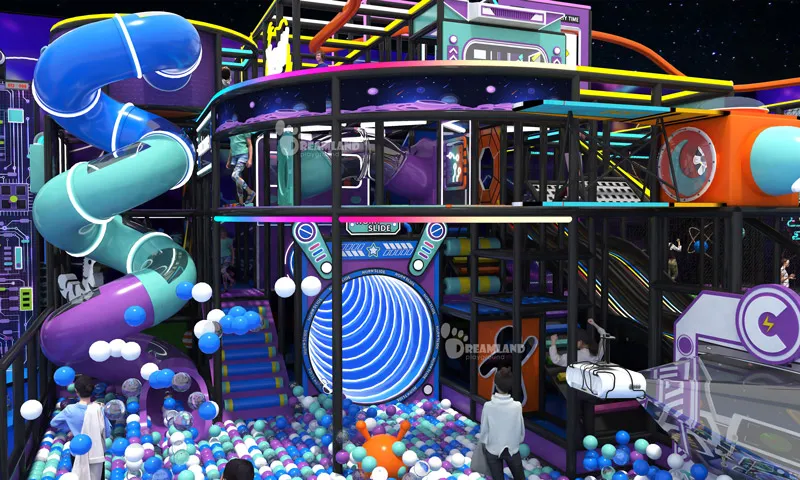
The Critical Role of Managers in Ensuring Playground Safety
A manager helps to ensure safety in addition to overseeing daily operations. You are expected by gatekeepers and guardians to prevent accidents and to recognize dangers before they become real. Your leadership has an effect on all members of the organization, including the teams that inspect the indoor play equipment and the staff members who keep an eye on the play areas. Implementing safety rules that follow accepted playground safety standards is one of your responsibilities. educating staff on how to properly check on children, follow rules, and handle emergencies.
They should be providing thrilling and safe playground equipment, including climbing walls, ninja course equipment, and trampoline safety equipment, to ensure the safety of fun activities. Help with evaluations and modifications to guarantee that your workplace complies with the most current safety standards. In other words, directors help to reduce risk and develop trust. When they show that they are concerned about safety, parents feel at ease sending their children to their care.
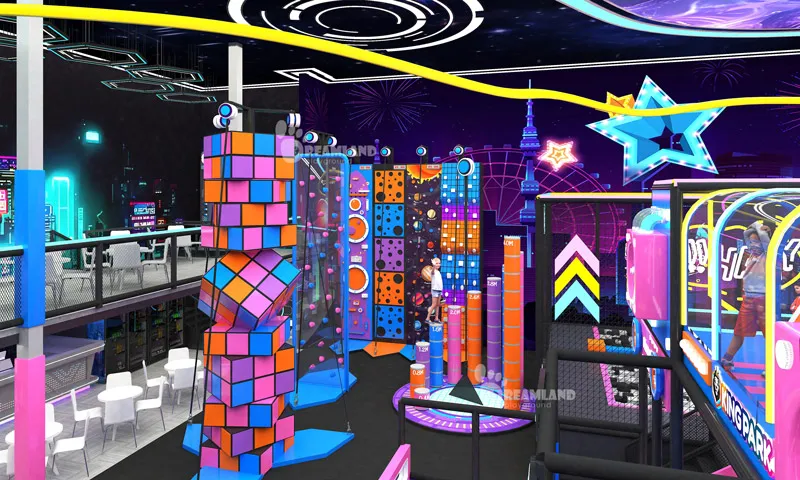
Common Hazards in Indoor Playgrounds and How to Avoid Them
The main indoor play area for kids could hide dangers if the managers are not careful. Knowing the risks allows you to come up with ways to prevent problems.
1. Equipment-Related Hazards
Climbing walls, interactive playground equipment, and playground equipment that is not properly maintained can cause injuries. Torn nets, exposed bumps, or worn-out cushions are warning signs.
Solution:
Establish a strict schedule for checking indoor play equipment on a regular basis and replacing or repairing any damaged parts as soon as possible.
2. Slippage and Fall Risks
Sweat, spilled drinks, and poor sanitation can make sports fields, smooth surfaces, and trampoline parks hazardous.
Solution:
Use non-slip flooring, mark off areas where food is not allowed, and make sure staff members conduct regular checks.
3. Overcrowding and Poor Supervision
Having too many kids in one area could increase the risk of accidents, especially in family entertainment centers (FECs).
Solution:
Set limits on the number of people who can be in each area, install cameras for further surveillance, and assign qualified staff to monitor the areas.
4. Age-Inappropriate Play
Playing with toys or other equipment might cause injury to children.
Solution:
Put a clear label on the equipment, such as "3–6 years old only," and prepare the staff to direct kids to the appropriate play spaces. So, make sure all equipment is properly labeled.
5. Hygiene and Sanitation Concerns
Indoor play equipment that is dirty can harbor bacteria that can be detrimental to one's health.
Solution:
Establish a regular cleaning schedule and use kid-safe disinfectants, particularly on surfaces that are frequently touched, such as ball pits and slides. You may avoid injuries and reassure parents that their children are safe on your playground by taking precautions against these hazards.
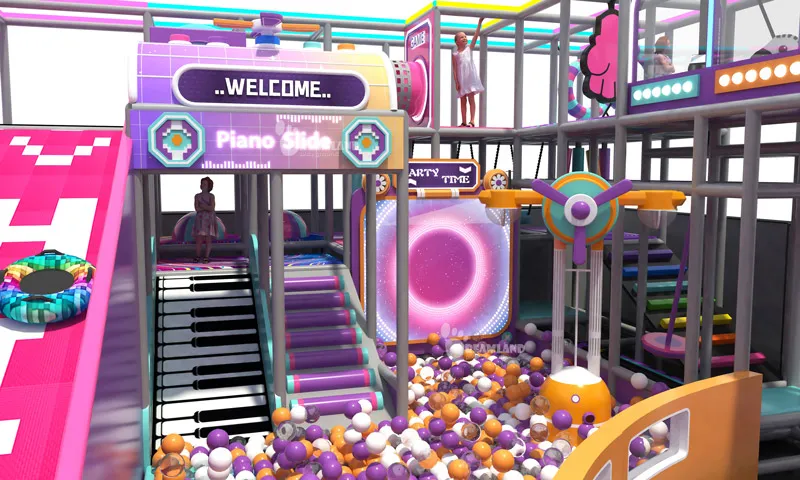
Key Safety Standards Every Playground Manager Must Know
Following set criteria is crucial to ensuring the safety of indoor play areas and averting catastrophes. In addition to protecting youngsters, these standards also help your organization avoid liability, cut insurance prices, and win over more parents.
Guidelines of the American Society for Testing and Materials (ASTM)
The ASTM F1918 standard is one of the most important requirements for indoor soft play equipment. It shows details about climbing frames, slides, ball pits, and obstacle courses. ASTM also includes regulations for materials, fire safety, entanglement risks, and falling surfaces.
- ASTM F1487 states that play areas for kids ages 2 to 12 should be kept secure.
- ASTM F2970: Recommendations for trampoline parks that guarantee their safe designs, soft padding, and high net-covered walls.
- The potential of surface materials to reduce head trauma is covered by ASTM F1292.
Using ASTM standards is the best way to ensure that businesses with attractions like trampoline parks or indoor play areas follow US safety rules
The guidelines of the European Standards (EN)
EN 1176 and EN 1177 are well-known European playground equipment safety rules.
- EN 1176 additionally covers material safety, moving parts, additional safety features, and becoming trapped.
- EN 1177 focuses on soft surfaces (such as matting or foam cushioning) underneath equipment that help absorb impacts. EN 16899: A guideline for parkour and free-form play areas applies to ninja course equipment and indoor play experiences.
If your playground is located in Europe or a family entertainment center that welcomes guests from all over the world, they are crucial.
IPEMA Certification
When a product is certified by IPEMA, it indicates that the Universal Play Hardware Producers Association has verified that it satisfies ASTM and CSA safety criteria. Selecting play equipment with IPEMA certification for indoor spaces guarantees its reliability and safety.
Additional Standards to Note
Additional Points to Keep in Mind
Commission for Consumer Product Safety (CPSC): offers the Public Playground Safety Handbook, which contains guidelines for risk prevention, planning, and supervision.
- ISO 24665 and other standards that examine the general safety of playground surfaces and how to maintain safe play places are examples of ISO benchmarks (from the International Organization for Standardization).
- Neighborhood fire and building codes ensure that materials are fire-resistant, that there are safe escape routes in case of an emergency, and that areas such as climbing walls at playgrounds or sports fields have the appropriate weight limitations. The Significance of Guidelines for Directors
Why Standards Matter for Managers
Adhering to the regulations helps prevent issues.
- Legal Protection: Protectors seek out play spaces that adhere to ASTM and EN safety regulations.
- Increasing Productivity: It is easier to manage playground safety when you stick to your goals.
- Global Consistency: Adhering to international standards helps guarantee that the same security guidelines are applied everywhere, especially if you have offices in several nations.
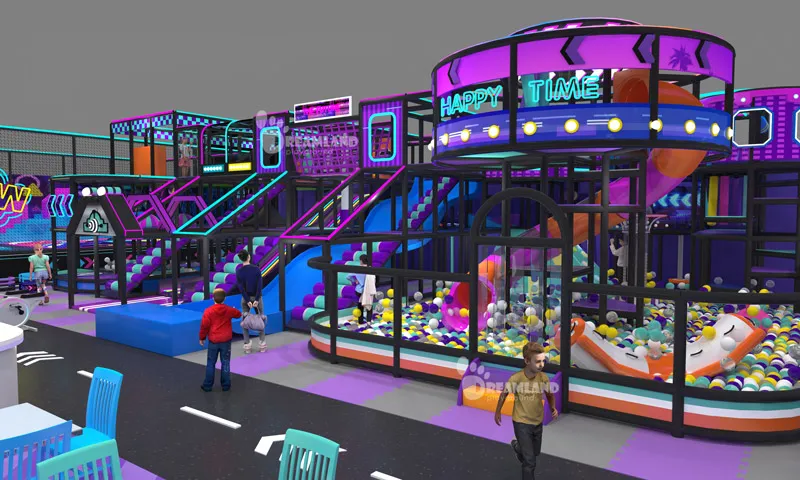
How to Create a Safe and Engaging Indoor Playground Environment
Creating environments that keep children safe while allowing them to explore and try new things is what safety is all about.
Prioritize Age-Zone Separation
Create distinct spaces in your indoor play area for children of various ages, such as sections for young children, older children, and larger children. This should increase attention and decrease crashes in sloppy gaming.
Materials for Safe Play:
Soft play equipment should have strong nets, safe paints, and foam cushioning that does not catch fire. To minimize damage, make sure surfaces can withstand collisions. Be sure to incorporate safety precautions for the attractions. Add safety nets to the trampoline area, clearly explain the regulations for bouncing, and indicate the safe bouncing zones.
Play area climbing divider:
Verify the condition of the mats and tackles. To help avoid collisions, incorporate soft edges and movement sensors into play areas. Make indoor play for businesses enjoyable while maintaining safety by using rounded edges and soft barriers.
Basic Guidelines and Indications
Post clear and simple guidelines in strategic locations, particularly in high-risk areas like trampoline parks and ninja courses. Be truthful and transparent when using images and information. When safety and enjoyment are combined, a space is created where children may freely explore, climb, and jump while adults can unwind and feel comfortable.
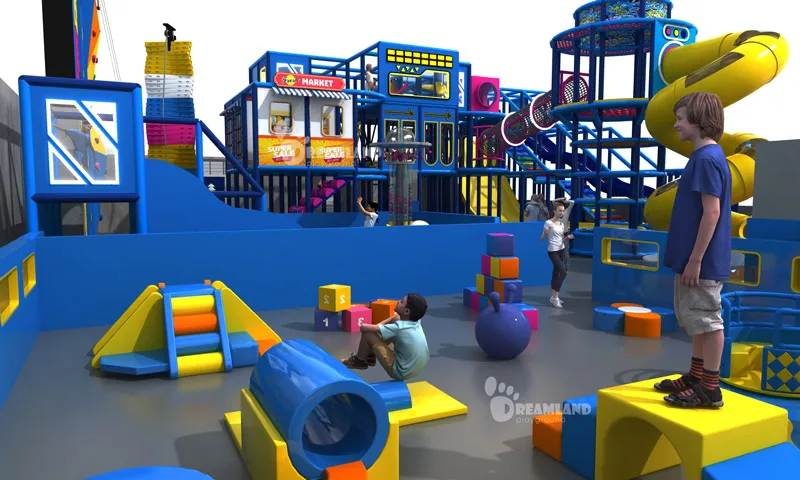
The Importance of Regular Inspections and Maintenance in Playgrounds
Without routine maintenance and inspections, even the best indoor play equipment can become dangerous. Regular use and minor deterioration over time might put children in serious danger. For directors, fostering a culture of checking and supporting goes beyond simply adhering to regulations; it also involves averting issues before they arise and making your space welcoming to families.
Why Regular Inspections Matter
- Preventing Accidents: A lot of accidents occur as a result of broken nets, loose cords, or worn-out padding that should have been identified sooner.
- Delayed Equipment Life: Having a support schedule extends the life of costly equipment, such as ninja course supplies and trampoline parts.
- Observing Security Rules: In order to maintain certification, guidelines such as ASTM and EN demand written review plans.
- Client Trust: The equipment is kept clean and well-maintained by the guardians. It builds confidence and enhances your standing as a supplier of kid-safe play spaces.
- Investment funds: It is far less expensive to fix minor issues early on than to replace entire structures after significant damage.
Example: Consider a trampoline whose air pressure has not been checked. If one spring is weak, it could bounce oddly, putting people at risk of injury or falling. This can be demonstrated with a straightforward daily check, avoiding any issues or obligations.
You can transform playground safety from something you only deal with when there is an issue into a planned and ongoing activity by including evaluations and maintenance in your strategy. Families will witness your commitment, and your company will prosper with fewer issues, more durable equipment, and increased confidence.
Essential Staff Training for Maintaining Playground Safety
Your employees are your best line of defense when it comes to keeping the indoor play area safe. If the leaders are not ready, the best equipment will not help the kids. Important areas to prepare for include the following:
- Emergency Response: How to treat injuries, administer first aid, and evacuate.
- Play Space Monitoring: keeping an eye on indoor play facilities, sports fields, and soft play areas to prevent dangerous conduct.
- Talking to customers: following the rules while preserving a warm, family-like environment. Look over the schedules: Identify early signs of equipment wear and report problems as soon as possible.
Employees with proper training not only reduce hazards but also improve the customer experience. Guardians pay attention when supervisors are watchful, friendly, and informed about playground safety regulations.
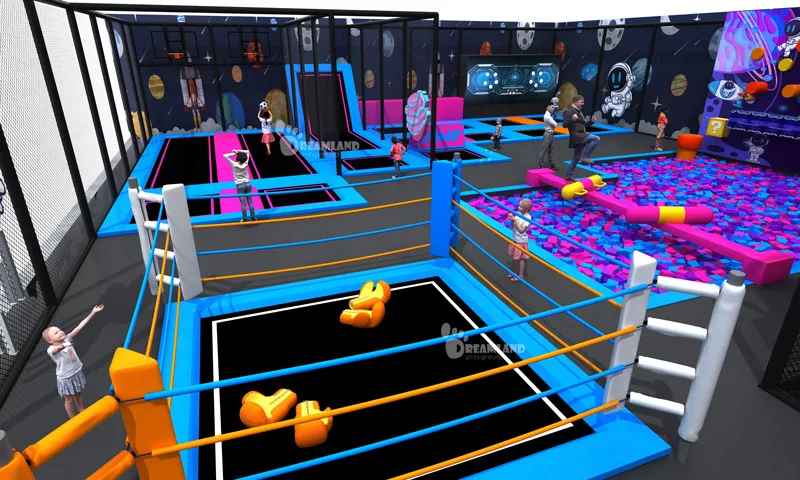
Conclusion
In conclusion, the success of any indoor playground or family fun center depends on safety first. Your ability as a supervisor to supervise playground safety rules, conduct routine inspections of indoor play equipment, and provide your staff proper training could be the difference between a well-known, successful business and one that is at risk. By focusing on creating safe and encouraging play places, addressing hazards early, and consistently improving safety, you may create a safer atmosphere and improve relationships with families. When kids can enjoy the thrill of trampoline safety gear, ninja course equipment, climbing walls, and playground tools without feeling scared, you have done a great job creating a safe and happy indoor play space.






